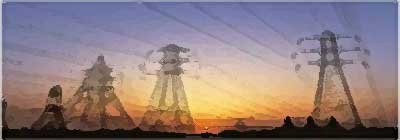
| Home |
| Company |
| Services |
| Publications |
| Contact |
| Case Study - Project Prioritization |
Representing Complex Prioritization Decisions Rationally at HECO |
The typical electric utility spends hundreds of millions of dollars annually in maintaining and expanding the capacity of its distribution system. The cable, wires, poles, and transformers require inspection, reinforcement, refurbishing, and replacement. And there is never enough money budgeted to go around. Too often, the project dollars flow to the loudest complainers, which is not necessarily the place where the greatest need is found. Hawaii Electric Company recognized that their projects should be selected based on how those projects contribute to the strategic objectives of the company. Although these objectives were reasonably well understood, there was no analytic method that could describe how different projects contributed to achieving the objectives. We began this project by constructing an attribute structure and value function that measured project contributions. These contributions came in the typical electric utility areas of reliability and customer service, but also included benefits to the company that were realized because of cultural sensitivity, environmental stewardship, and community relations. We created this value function in several workshops using our methods applied to their specific issues. Shortly after the workshops, the value function was implemented in the software. Sets of projects were represented in the system and the value scores were subjected to scrutiny at all levels of the firm. Everyone agreed that the method captured the company values, projects were reasonably represented in they system, and the relative scores, after a few surprises, made sense. The methodology had brought transparency, repeatability, and rationality to the complex, often subjective, process of selecting projects.
|
“The Project Prioritization methodology that you developed is invaluable and should be applied much more widely than just the electric utility industry. I can't think of a business or organization that wouldn't benefit from it. I wish I had had it in the 1980s when I was head of Hawaii's PBS network. We were constantly faced with prioritization and budget constraint problems, and your P2 methodology would have helped bring rationality to the decision making process.
”The workshops you conducted at HECO were first rate. Everyone enjoyed and benefited from them. They were like short courses in critical thinking and made better decision makers of all of us.
”During my professional career, there are few methodologies that have impressed me with their effectiveness and practicality the way VMN’s Project Prioritization has. Therefore, it is easy for me to enthusiastically endorse it and the work you are doing to gain its widespread application.”
James B. Young, PhD, PE